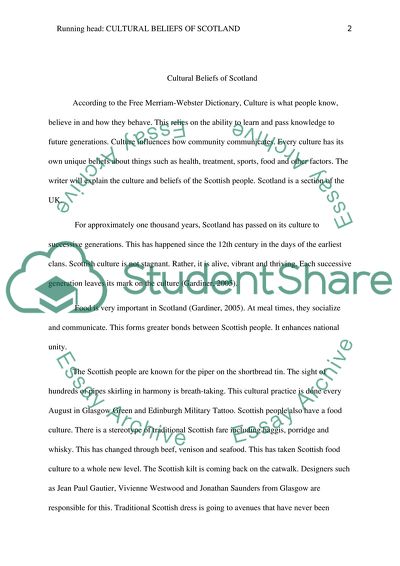Cite this document
(Cultural Beliefs of Scotland Coursework Example | Topics and Well Written Essays - 1250 words, n.d.)
Cultural Beliefs of Scotland Coursework Example | Topics and Well Written Essays - 1250 words. https://studentshare.org/culture/1816875-communication-and-culture
Cultural Beliefs of Scotland Coursework Example | Topics and Well Written Essays - 1250 words. https://studentshare.org/culture/1816875-communication-and-culture
(Cultural Beliefs of Scotland Coursework Example | Topics and Well Written Essays - 1250 Words)
Cultural Beliefs of Scotland Coursework Example | Topics and Well Written Essays - 1250 Words. https://studentshare.org/culture/1816875-communication-and-culture.
Cultural Beliefs of Scotland Coursework Example | Topics and Well Written Essays - 1250 Words. https://studentshare.org/culture/1816875-communication-and-culture.
“Cultural Beliefs of Scotland Coursework Example | Topics and Well Written Essays - 1250 Words”. https://studentshare.org/culture/1816875-communication-and-culture.


